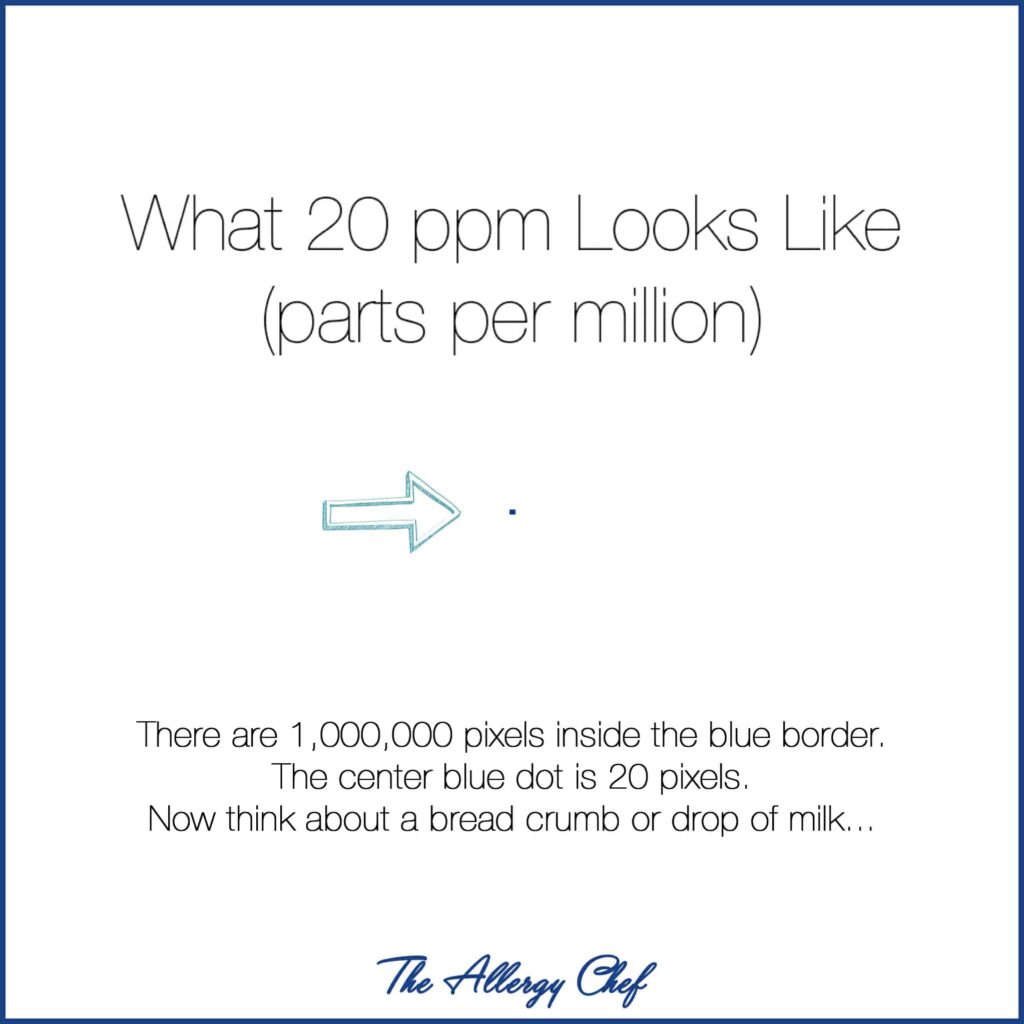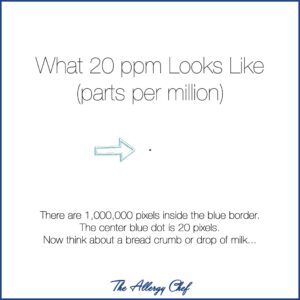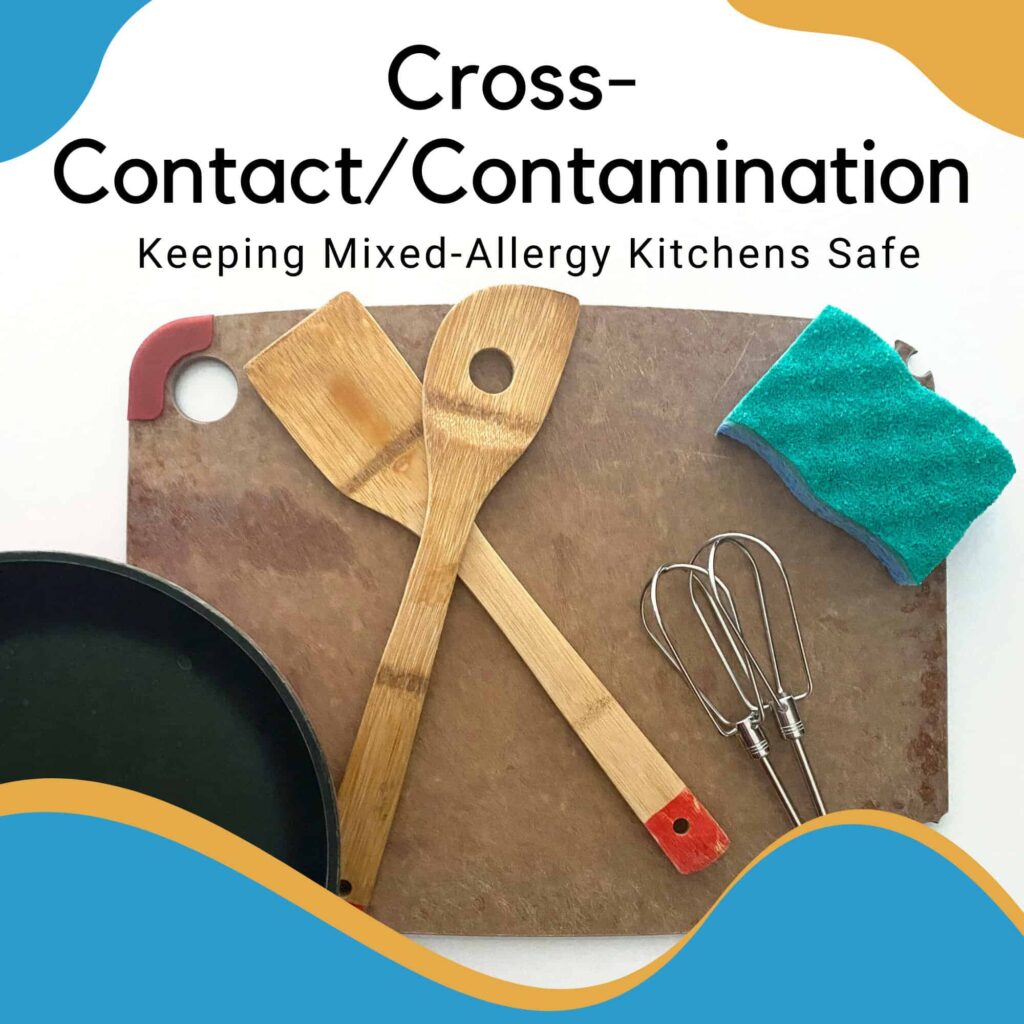When you’re new to food allergies and Celiac Disease, the term PPM will make its presence known. PPM stands for parts per million. That means if we had 1,000,000 parts of something, 20 are represented.
Now, let’s take a bigger look at the image.

As the image says, there are 1,000,000 pixels inside the blue border of the image. The very small square, where the arrow is pointing, is 20 pixels. THAT is 20ppm in a visual representation. It’s important that you understand that a crumb of food can cause chaos in the system of someone who has Celiac Disease, or induce anaphylaxis in someone who has a food allergy.
Now think about how small trace amounts can be that cause a reaction in an individual with Celiac Disease or food allergies. This representation is why I take a firm stance on making sure people understand how serious food allergies are.
For those who can not tolerate trace amounts of what they are allergic/intolerant to, all foods should be made at home with only raw materials and select packaged foods being purchased. Once they’re comfortable cooking at home, they can branch out to look for brands that use equipment free from what they’re allergic to, and see if purchasing pre-made food makes sense.
Whilst this may seem overwhelming at first, it does get easier over time. Prepping and freezing extra food goes a long way in making restricted diets manageable.
How Do I Know If I/My Child Can Handle Trace Amounts?
The sad news is, you’ll generally find out the hard way. Some allergists will see your results and suggest no trace amounts right from the get go. Others won’t mention it all.
I’ve found through my own research that about 30% of people with food allergies can’t tolerate food made on shared equipment. Already, the odds are in your favor that you’ll be in the 70% group.
Sadly, you’ll probably find out the hard way if you’re in the 30% group. You’ll eat food that’s been prepared on shared equipment and have some kind of allergic reaction. If this happens, be sure to follow your action plan.
Trace Amounts Aren’t Distributed Equally
Think about a cutting board. If the left side is covered in apple juice from cutting apples, then you cut carrots on the right side, most likely, only a few carrots will have trace amounts of apple on them. Then the question is, do you happen to eat those few pieces of carrot?
That’s what it’s like in food manufacturing. Take shared equipment as an example. Just because the equipment is shared doesn’t mean that every item will contain trace amounts over all of its surface area.
It means that there may be some particles here, and some particle there. It’s why some people can eat a food for months, then suddenly react to it one day. They are probably in the 30% group and got a “bad batch”.
I had to learn this lesson the hard way for both myself and one of the kids. With said child, it took this happening two separate times (different products) for me to make the connection to shared equipment. Once I did, we NEVER purchased food made on shared equipment for them again. The risk wasn’t worth it. Of course, it meant managing a mixed allergy household, but I’ll tell you right now, I have ZERO regrets.
If you’d like to learn more on this topic, check out this article on Cross Contact/Contamination.
Use This Visual to Help Others Understand
I want to encourage you to bookmark this article and share it online as well. Many of you will encounter people in your life who don’t understand your free-from lifestyle. Let the image I shared today be those thousand words for you.
If you’re finding the free-from life to be incredibly challenging, check out the Food Allergy Help 101 courses available online.


